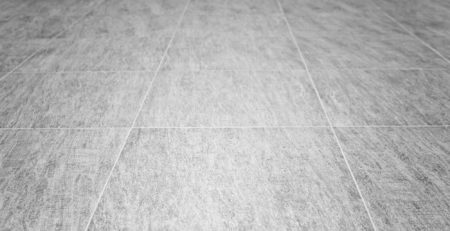What Is Resilient Flooring?
If you’re a Designer or Architect you’ve probably heard of resilient flooring. Maybe you’ve been tasked with your first healthcare design project, or you’ve made the career change from residential design to commercial. If resilient flooring isn’t a product you’re familiar with, or you know the basics and would like to be able to explain resilient flooring in a deeper way, you’ve come to the right place.
We’re going to do a deep dive into resilient flooring available today, how it’s made and where each type should be used.
Resilient Flooring Types
They include:
- Vinyl products, like LVT and sheet vinyl
- Vinyl-composition products, like VCT
- Rubber
- Cork
- Linoleum
According to the Resilient Floor Covering Institute, or RFCI: Resilient flooring is defined like this, “a non-textile floor that provides underfoot comfort and characteristically bounces back from repeated traffic or compression.”Basically, resilient flooring is anything where the wear surface is non-textile, non-wood and non-stone – so anything that is not carpet, hardwood or laminate, stone, ceramic or concrete. Laminate does start to approach the resilient category, because of its multilayer construction, but ultimately, it’s too wood-based to be considered resilient – it doesn’t “bounce back.”
Resilient Products Come In Multiple Forms
Primarily resilient products are available in sheet, tile and plank.
Sheet:
- These products are typically packaged in rolls.
- They are typically very flexible products.
- They can vary in length. While they can vary in width too, most often the length will exceed the width. That’s a standard rule for sheet products.
Many companies sell sheet vinyl in 6 or 12 foot widths. Alliance Floor Covering offers multiple sizes to not only help in corridors but throughout an installation. The benefit is less waste, less seams, quicker install which also translates to less cost to install our product vs. competitors.
Tile and Plank:
- These products are typically packed in cartons, often in flat pieces.
- Traditionally, tile and plank products are less flexible, not quite as plasticized as sheet products, so they cannot be rolled up.
- Tiles and planks include things like VCT, solid vinyl tile (SVT), LVT, MLF or multilayered flooring, and rubber tile.
- MLF, multi-layered flooring, includes things like WPC (wood polymer core), SPC (solid polymer core), “solid core” and “rigid core” tile and plank products, and these are some of the newest kinds of resilient flooring currently available.
On the sheet side, there are both homogeneous and heterogeneous products, which we’ll get into in just a moment. These products include: sheet vinyl, sheet rubber, linoleum, and any other non-carpet products in roll form.
The Difference Between Homogeneous and Heterogeneous Flooring:
- Homogeneous the word itself means that it is basically one substance – it’s a single layer, top to bottom
- Heterogeneous is simply a product that is layered, typically with separate chemistries for each layer of the product – and we will get into some examples of these.
The best way to tell a homogeneous product from a heterogeneous product is to flip the product over and look at the back vs. the front. Essentially, if the product looks the same on both sides, it’s homogeneous. So, that would include traditional homogeneous sheet vinyl, rubber, VCT, solid vinyl tile, and cork – though you can have cork floor tiles with a layered, heterogeneous construction.
Meanwhile, you can tell when a product’s heterogeneous because it doesn’t look the same on the top and bottom. Plus, it’s made up of several layers in the middle of the construction. This would include LVT, multilayered flooring, and heterogeneous sheet vinyl or printed sheet vinyl.
Hybrid products, sometimes called inlaid products, are essentially a single layer, but may have a thin backing or some thin inner construction layer like a fiberglass layer for dimensional stability
These include products like inlaid sheet vinyl and linoleum, which usually look like a homogeneous product from the top with that chip visual, but have a thin backing layer.
The Manufacturing Process
Homogenous:
This process starts off with taking the raw materials that go into the base of the products – materials like plasticizers, resins, and limestone – and putting them into giant mixers. Then the mixture is calendered out. Calendering is basically sheeting the product; think of it as a big pasta maker, where you take the dough and you slip it through a roller to create a thinner, spread-out noodle that has your desired thickness.
Heterogeneous
It starts with a carrier – with either a felt backing or a fiberglass backing it is rolled through a coating, which may be adding a layer of vinyl onto it. The coated backing is then heated up in an oven to cure it, making sure it is a flat, smooth, perfect finish that will eventually serve as a canvas for the next step in this process, the printing! At this point in the process a heterogeneous product has already been created with two different layers.
From there, manufacturers take that first green roll all the way to the left – that pregelled, felt substrate – then it goes through a series of rotogravure print stations. Rotogravure printing is pictured here: A series of printing cylinders, just like printing a newspaper.
Understanding Resilient Flooring Products
All in all this topic is layered. Get it? Layered. VCT, MLF, LVT, Rotogravure, Calendering, this stuff is not for the faint of heart. Knowing the lingo is half the battle, and you’ve got this article to reference for that.
When it comes time to spec a resilient flooring product don’t panic, you can now know you’ve got the right product in the right application with Alliance Floor Covering!




Leave a Reply